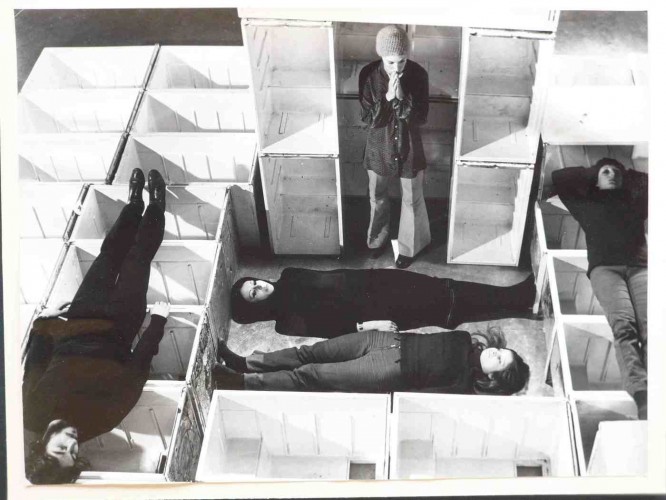Postcolonial design as a window to the future
DS.WRITER:
Christina Ioakeimidou
Μετα-αποικιακή αρχιτεκτονική, Ανατολικό Πακιστάν (Σιδηροδρομικός σταθμός Kamalapur, Dhaka, έτος κατασκευής: 1968) | Πηγή εικόνας: media.npr.org
Over the centuries, the territorial expansion of various peoples is a common occurrence. Primarily, the great civilizations of antiquity, from the Phoenicians to the Romans and the Arabs, aimed at the greatest possible spatial expansion beyond the narrow borders of their state. This expansion practice continued worldwide. After all, the great discoveries, e.g. of the American continent, were nothing more than an attempt by European countries to discover and conquer new, overseas territories. African countries, India, and the entire American continent were colonized by Europeans and their centuries-long presence is still evident. But in what ways is it evident to this day, when many of these countries are still struggling with the "ghost" of the colonialists? And, above all, how did they manage to chart a new path, after the end of the colonial regime?
Colonialism, architecture and design
By the term Colonialism, we refer to the territorial and cultural expansion of a country to another people’s land with the aim of subjugating them. However, the conquest is not done conceptually - by the sterile influence of the stronger state on the weaker one - but practically, by the transfer of populations of the former, with the aim of total domination of the "new country". Thus, the metropolis already from ancient times transported groups, mainly farmers, with the aim of gradually conquering the locals of another place. The term Colonialism owes its name to this practice since it comes from the Latin word colonus, meaning farmer.
Obviously, the settlers, in addition to the submission they showed to the metropolis, also brought with them its cultural characteristics. After all, this cultural expansion is evident to this day in areas of the Mediterranean, where Greek-style temples are found in Southern Italy or Arab influences in the Iberian peninsula, with the most important being the Alhambra palace and fortress in Granada.
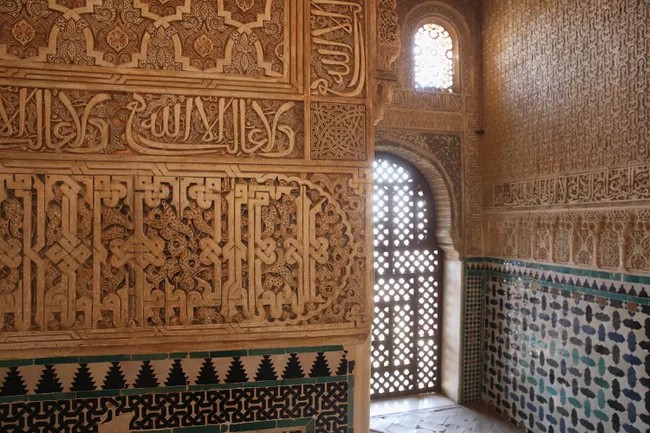
Detail from the palace interiors | Image Source: thoughtco.com
This building is perhaps the best example of the application of Islamic architectural composition and decoration on European soil, making clear the cultural expansion of the Arabs and their indirect political and ideological imposition on the conquered country. After all, both architecture and design were used to smooth the transition to the new power and to indicate the overall superiority of the conqueror.
Similar examples of colonial architecture, of course, can also be found later, in the great conquests of the Europeans. So-called British India (British Raj) could be the most typical example of this practice. Bombay is the city that received the most reconstruction from the settlers, as it was the most important economic and political center of the country. Thus, Victorian architecture is found everywhere from the Gateway of India arch to the Oval Maiden area. In particular, the latter was built with the purpose of the political declaration of British rule, with the building of the University of Bombay with its imposing design - decorated with rosettes and Gothic-style arches - standing somewhat out of place in the highly exotic landscape.
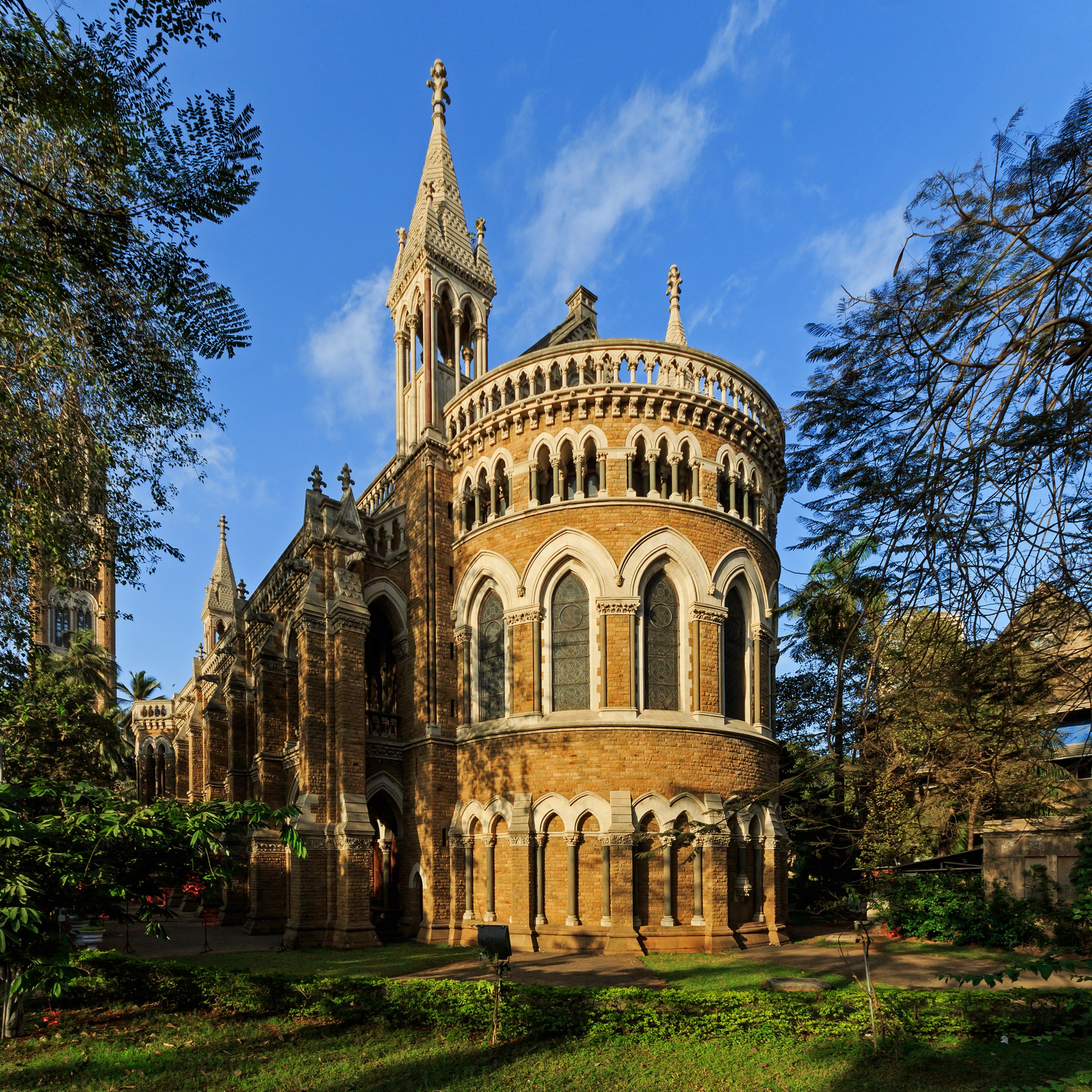
University of Mumbai | Image Source: images.shiksha.com
On the other side, across the Atlantic, the practice of Colonialism reached its peak on a political, economic, social and cultural level. With the gradual decrease of the natives’ population and the weakening of their social bonds, the new inhabitants dominated the whole continent, using greater violence than in the case of India. However, in this case, especially in North America, a paradox seems to be detected. Although the reconstruction of the new cities was done with the logic of applying the architectural type of the metropolis to the "new country", with the construction of mainly public buildings in a neoclassical style, we also have the adoption of decorative and architectural types, which refer to local or other exotic cultural traditions.
The well-known Bungalows follow exactly this trend. With the term derived from the word bangla, these new houses are inspired by the houses found in Bengal, the region with the strongest colonial expansion. The first "a house in the Bengal style", as they were actually called, was built in 1896, in the “principal” colonial metropolis, England and in the USA, at the beginning of the 20th century, they were increasingly multiplying.
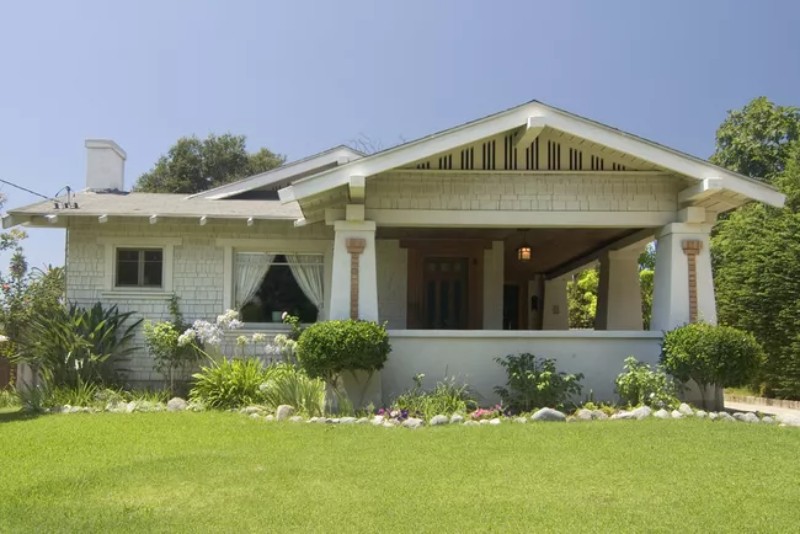
Bungalows (USA, start of the 20th century) | Image Source: thoughtco.com
In addition, in the interior decoration of the buildings, the same, in many cases, inversion seems to be perpetuated to this day. From the term transplantation, which was often used by the English to describe the practice of development in the colonies, we move on to the appropriation by whites of many indigenous cultural elements. The use of wood is one of them - in an era in which new materials, e.g. steel and iron, are the new trend, many use wooden furniture and objects or even cover the entire interior of the house with natural materials. Also, decorative objects that refer to the local culture make their appearance and become trends. These are most often made and woven from wood and bamboo, while the use of tapestries or fabrics with patterns is also found, as references to various cultures. Besides, collectors are now emerging who collect artworks that are nothing more than objects taken from the colonies, traded and sold by the colonists.

Image Source: i.pinimg.com
Today, this ambiguous trend of cultural appropriation has reached its peak, not only in design but also in other fields, such as the fashion industry, triggering many reactions.
But was the road to Decolonization easy? And how can this change become evident today?
Post-colonialism or apparent liberation?
The decline of the great empires and the gradual awakening of the native inhabitants of the colonies, lead at a slow but steady pace to the initial shrinking and subsequent abolition of Colonialism almost all over the world. Liberation movements and voices began to multiply and give impetus to the beginning of the period of Decolonization and the creation of new, independent states. Of course, this transition was by no means an easy task, since many of the regions for centuries were completely dependent on the metropolitan country, without the ability of self-control and organization. For this reason, they found themselves "naked" politically and economically in an era of rapid developments, forced to adopt the ways of administration and political organization of the now developed states, i.e. their former colonialists.
Over the years, there have been attempts to culturally move away from the imposed - by the settlers - style and highlight themselves anew. Obviously, the signs of the past centuries are visible and act as a reminder of the previous regime to the inhabitants of the new countries, while in countries like the USA, where the past of slavery is not just a dim memory -not even half a century has passed since the days of Racial segregation - these buildings stand as landmarks of oppression and violence. Thus, perhaps a neoclassical building in Washington or Louisiana may be aesthetically pleasing, but it does not cease to stand as a symbol of the former ruling class of settlers, acting as a direct continuation and reminder of the dominant architectural style of European metropolises of previous centuries. Thus, the imposition of the culture and the way of seeing society through the eyes of white settlers is carved into public space as well, altering and degrading the local tradition.

United States Supreme Court Building (Ουάσινγκτον, 1935) | Image Source: el.m.wikipedia.org
Therefore, having achieved territorial autonomy, what plagues the inhabitants as well as the intellectual and artistic life of the countries, is this question: how will De-colonialism be achieved in the public space?
Many countries, many artists, one goal
The thought that about 80% of the world was settled by Europeans leads to the conclusion that the reasons and motivations for Decolonialisation vary. The people involved in this change also differ. Architects, designers and visual artists have suggested ways in which the desired changes can be made.
In the wake of the recent killing of George Floyd on May 25, 2020, What Design Can Do and Dezeen collaborated to organize a program about how design can contribute to social justice. The goal of the program is to create, through "just" design, a sustainable and fair world for all, without exclusions. With the help of the artistic community, design is made available to people, aiming to reconstruct and solve the problems of societies worldwide, as the organization is active in many countries, such as the Netherlands - where it is based -, Japan and Kenya.
Author and designer Anoushka Khandwala, having pointed out the importance of understanding the historical context of design, states that the main concern is to focus on who we are as people, not as designers. With this thought in mind, any kind of design will be able to have a real impact, deeply influencing the audience, since it will essentially be designed knowing the people it adresses. This profoundly anti-racist discourse by Khandwala is linked to the Black Lives Matter movement and the general mobilization of recent years for radical social change in the US.

Anoushka Khandwala, Personal (2019) | Image Source: anoushkakhandwala.com
The work of Paul Cocksedge is also innovative, bringing to light and transforming a row of bricks, which was located directly below his studio in London. Victorian building materials were expertly transformed into furniture, highlighting the potential of continuing a building's history and its "adaptation" to the modern world. In this way EXCAVATION: Evicted, as the project presented in 2017 at Milan design week 2017 was called, sought to demonstrate the successive building layers beneath the London building and highlight the complexity of the history of the city itself. This "archaeologically designed" act of Cocksedge triggered a practical approach to the historicity of the city, with the aim of understanding both the timelessness of the respective objects and respecting and highlighting the past.

Paul Cocksedge, Milan design week 2017 | Image Source: i.pinimg.com
Ângela Ferreira's installations are equally important. With an eye that looks into the future of the post-colonial era, Ferreira brings a new, optimistic view, trying to understand the past, since as she says in an interview: "It's about trying to find ways to move forward, always believing that we cannot think of role models today if we do not understand the role models of yesterday and the day before yesterday". This dialogue of Ferreira's with the colonial past gives her the opportunity to reflect on the events and history of the previous years and the importance of the modern trend of architecture in the redesign of the African colonies. In addition, with work that opposed Apartheid, she sought to expand the core of her work to understanding the history of the countries that arose in the post-colonial period, and the attempt to solve the problems that still plague these areas. By looking at her installations, the artist helps us restore the, deliberately or not, lost memory and to revise the way of viewing and appropriating the building remains of Colonialism. Thus, by considering the standards of yesterday, it is possible to redesign the future, which was and unfortunately still is quite uncertain.
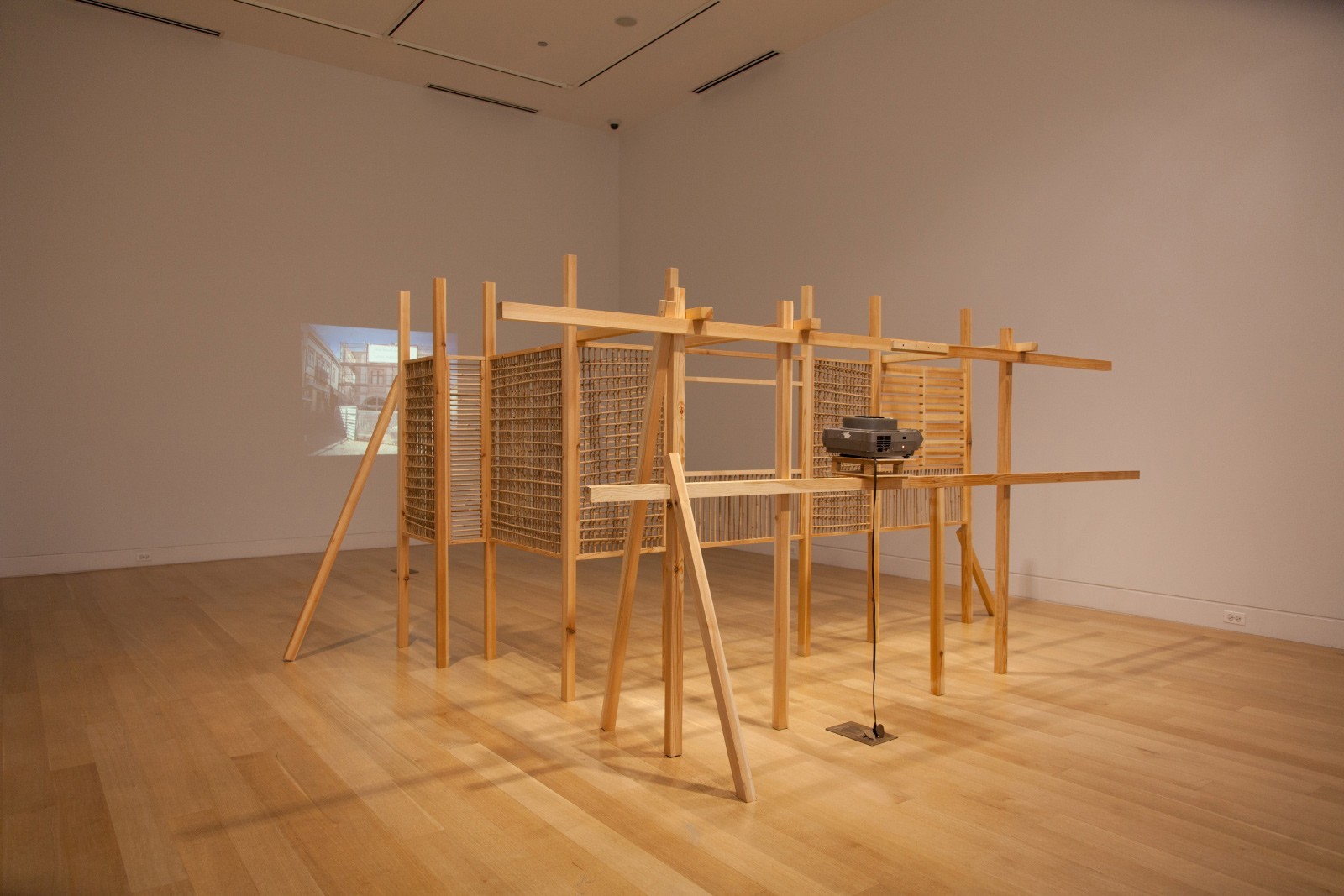
Ângela Ferreira, Zip Zap and Zumbi (2017) | Image Source: resources.depaul.edu
At this point one could not fail to mention the great development of African Modernism in the 60s and 70s, a movement that tended towards a more brutalist, almost futuristic approach to design, leaving no room for a "look at the past". A movement that can be characterized as both deeply ideological and political, the architecture of these decades seemingly breaks any ties with the colonial past, aiming for a totally independent future, which of course was and still is quite uncertain politically and socially. However, it should be noted that this fracture from the past does not in any way concern the cultural heritage of African countries, which in all projects is respected and remains visible.
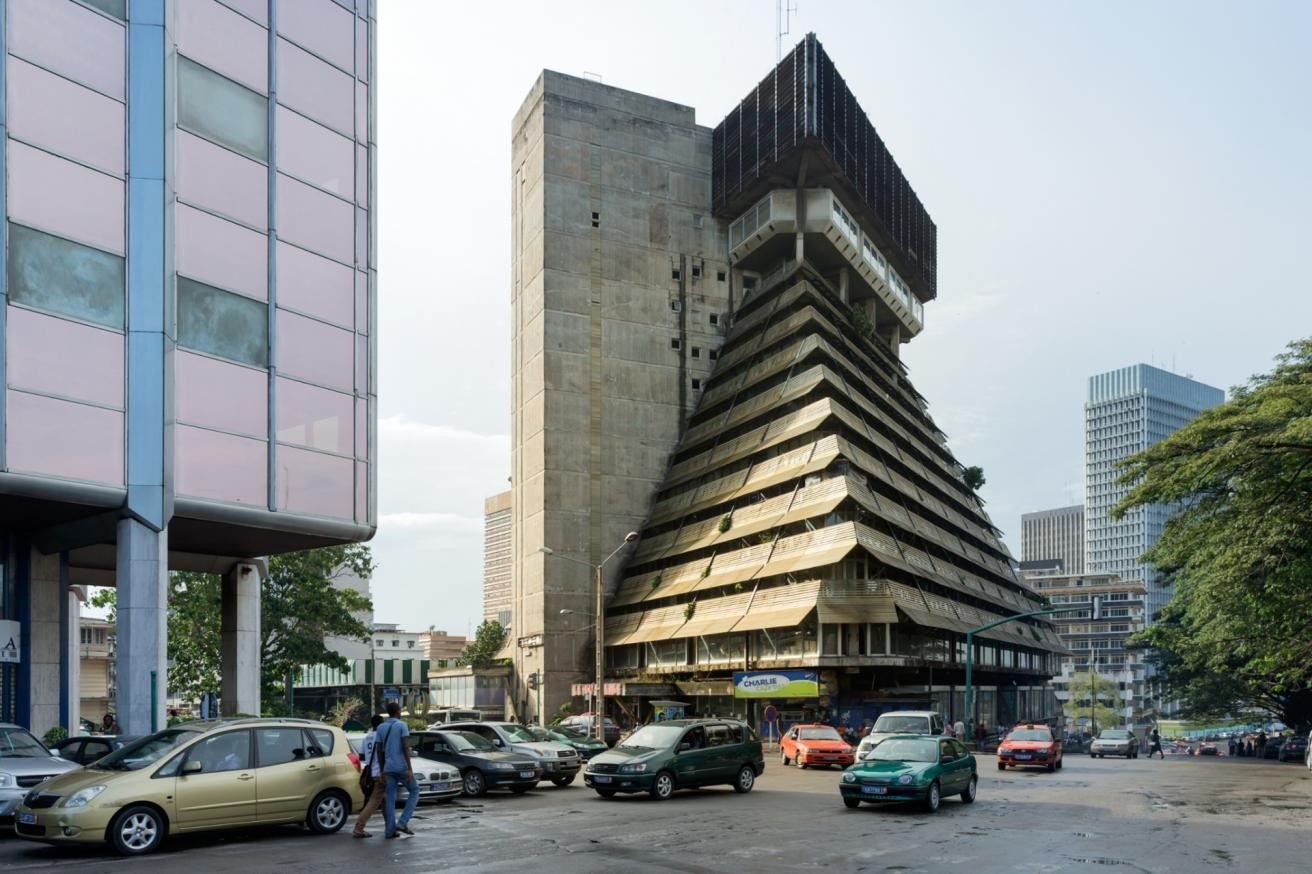
La Pyramide, Rinaldo Olivier (Ivory Coast) | Image Source: edition.cnn.com
Possibly, then, the solution for a society removed from its colonial past lies in understanding this very past and how these centuries of enslavement still weigh on the consciousness of individuals. Therefore, just as architecture and design were used to enforce sovereignty, so they will be used again to develop a new, future-oriented society. We saw it happen in the interwar period with the change brought about by the simplicity of the Bauhaus, and we hope to see it again now.
Sources/ Further reading
Colonialism. From: https://plato.stanford.edu/entries/colonialism/.
D. Ivison. Postcolonialism. From: https://www.britannica.com/topic/postcolonialism.
C. Ross. The architecture of independence? Or colonialism?. From: https://www.archpaper.com/2016/04/review-architecture-of-independence-graham-foundation/.
A. Frearson. Paul Cocksedge mines the floor of his studio for latest furniture collection. From: https://www.dezeen.com/2017/03/22/paul-cocksedge-mines-floor-hackney-studio-furniture-excavation-evicted-milan-design-week-2017/.
A. Khandwala (2020). ANOUSHKA KHANDWALA ON WHAT IT MEANS TO DECOLONISE DESIGN IN THE LIGHT OF THE MOBILISATION OF THE BLACK LIVES MATTER MOVEMENT. Από: https://www.whatdesigncando.com/stories/decolonising-design/.
PAUL COCKSEDGE | Excavation: Evicted : http://jablonproductions.com/project/paul-cocksedge-excavation-evicted/.
Regarding Excavation: Evicted, at Surface Magazine: https://www.youtube.com/watch?v=ey3uiascF6w.
Info for What Design Can Do, στο: https://www.whatdesigncando.com/.
Ângela Ferreira complete interview at PIN-UP: https://pinupmagazine.org/articles/interview-angela-ferreira-modern-architecture-colonialism.







